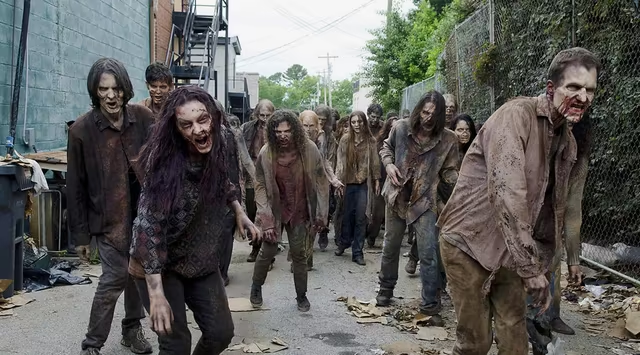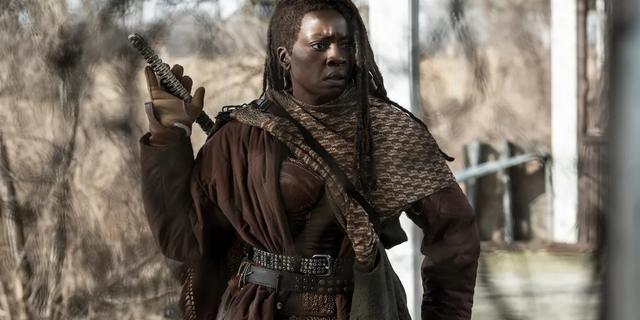If you click on a link and make a purchase we may receive a small commission. Read our editorial policy.
Remembering the unlikely cyborg that was Marvel's Terminator 2: Judgment Day comic book
Klaus Janson's art was a big draw (no pun intended) behind the comic based on the 1991 hit movie

Taking a break from all of the comic book Judgment Days I’ve been revisiting lately, I spent some time unwinding by rewatching James Cameron’s 1991 movie Terminator 2: Judgment Day the other day. (What can I say? I like a theme.) To say that it holds up is an understatement; in my humble opinion, it remains one of the best action movies ever made, with a beautifully over-the-top approach to almost every single element that makes it entirely irresistible. Despite centering around two robots undeniably dedicated to achieving their missions with the least amount of fuss or frills imaginable, the movie is a love letter to excess in seemingly all of its forms, especially when it comes to effects work. The size of the explosions alone…!
In contrast, Marvel Comics' three-issue Terminator 2: Judgment Day adaptation is an experience akin to watching the above movie on fast-forward, with a friend somewhat ineptly trying to fill in the blanks of what you’ve missed. As unlikely as it seems, I don’t necessarily mean that as a negative.
Let’s be clear; there were always going to be cuts made when adapting a 137-minute movie into a comic that runs around 60 pages, all told. There’s simply not the amount of real estate on the page to successfully bring every moment of the movie into the comic, even if artist Klaus Janson was putting 16 panels on every page instead of creating the dynamic, heavily stylized work that he actually was putting out there. (To be fair, some pages have up to 12 panels on there, because it’s what works for the scene; there are also a number of pages with far fewer panels, up to and including a few splash pages. Variety isn’t just the spice of life; it’s a key to the visual pacing of this particular comic book series.)

Janson’s work is one the strongest draws of Marvel’s T2, without a doubt. His angular, blocky cartooning, framed by heavy inks and blissfully absent of any serious attempt at photo-realism, with only a handful of images even attempting likenesses to the actors from the movie, is a joy throughout this series, taking the skills he’d already displayed on comics like Daredevil and The Punisher and pushing them in different directions, to different ends. It’s a masterclass in comics storytelling throughout, with Janson forced to come up with some ingenious, and in other cases, ludicrous, workarounds to reproducing special effects that simply couldn’t work on the page. (Those early digital morphing effects, honestly, are mostly skipped entirely with a couple of notable exceptions.) Even with the limitations of print quality of the era, it’s a great looking book that feels both at odds with everything else Marvel was publishing at the time – one of the issues has an editorial mention of the launches of both Rob Liefeld’s X-Force and Jim Lee’s X-Men books – and curiously timeless, at least in terms of visuals.
The writing, however…
Again, we’ve established that Gregory Wright, whose official credit in the series is “adaptation” (James Cameron and William Wisher jointly get the first credit in every issue, which is a “Based on the screenplay by” mention), has a thankless task in making sure that the basic plot of T2 is squeezed into the relatively short comic book series; Marvel’s adaptation of the original Star Wars movie, less than a decade and a half earlier, had twice the number of issues for a movie that is 15 minutes shorter. It’s safe to say that, in trying to make sure that the main beats of the story are present and correct, certain liberties are taken, and certain scenes and even characters jettisoned to ensure that the important stuff shows up when it’s supposed to… which is certainly bad news for anyone who thinks that John Connor’s foster parents are central parts of the story who deserve more attention, as they’re pretty much entirely absent here. But what makes the comic truly compelling from a writing standpoint is what Wright adds in order to bridge the gaps and make the comic work more like… well, a 1991 Marvel comic.

I’m not just talking about the changes in dialogue needed to ensure that the series earns the Comics Code Authority stamp on each issue’s cover, as much fun is it to read a bowdlerized version of the scene were John Connor teaches the Terminator how to talk like a real person. (“If someone comes on to you with attitude, you say ‘eat me,’” becomes “If someone comes off to you with attitude, you say, ‘stick it,’” for example, while unsurprisingly, “dickwad” becomes “jerkwad” in the same scene.) Instead, it’s the additions that Wright makes to ensure that readers know what’s going on in particular scenes that are, genuinely, thrilling, if admittedly somewhat structural and formal in their addition.
Say what you will about the direction of James Cameron or the acting skills of Edward Furlong, but does anything in the Terminator 2 movie let us inside John’s head during the moment where he’s told that, in the future, he’s the leader of the human uprising against robotic overlords as well as the comic’s choice to cut to a shocked looking John thinking to himself, “this is deep”? Similarly, when he hears the Terminator impersonate his voice, he thinks, “that’s my voice!” It’s easy to make fun of this kind of thing, but there’s something genuinely wonderful about it, both in terms of how it bluntly translates something that can be communicated relatively easily onscreen into something legible for comic book readers, but also in just how much it does to translate the story into a Marvel Comic of the era.

By giving John thought balloons like this, or letting him think “ohmigod ohmigod ohmigod” when he’s being shot at as if he’s a Chris Claremont character from early New Mutants, Wright bridges the gap between the source material for the series and the reality of what it actually is. Somehow, amazingly, he manages to take the cinematic overload of James Cameron’s creation and turn it into something that reads like an authentic, if particularly stuffed, Marvel comic book. For as clumsy as those thought balloons admittedly read, it’s a masterstroke of formalism, and something worth applauding.
Ultimately, I can’t even pretend that Marvel’s three-issue Terminator 2: Judgment Day is even vaguely as good as the original movie, not even as a joke. The movie has an undeniable momentum and dedication to its mission to rival that of its cyborg killing machine stars, while the comic feels like an uneven combination of factors that don’t naturally work together, even at the best of times. In that respect, perhaps it’s the more honest representation of its subject matter, and the most fitting Terminator story yet told. After all, what is a cyborg, if not an unlikely, ill-fitting combination of two things that don’t necessarily go together?

Earlier in this tour of comic book Judgment Days from days gone by, we revisited an early Geoff Johns comic that has almost entirely fallen into obscurity. Should we blame that on how unexciting the name the Sentinels of Magic is for a superteam?
Follow Popverse for upcoming event coverage and news
Find out how we conduct our review by reading our review policy
Let Popverse be your tour guide through the wilderness of pop culture
Sign in and let us help you find your new favorite thing.
















Comments
Want to join the discussion? Please activate your account first.
Visit Reedpop ID if you need to resend the confirmation email.